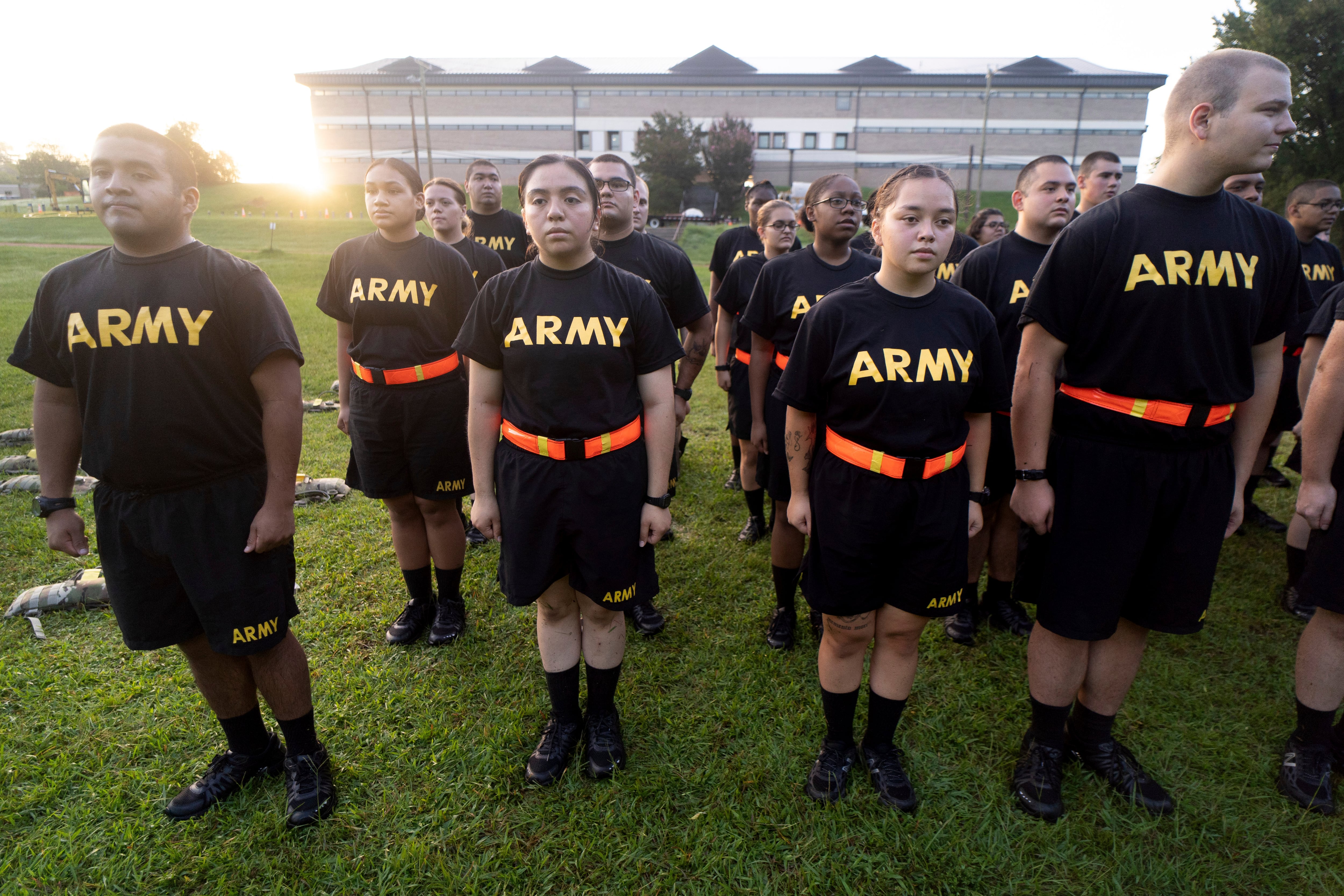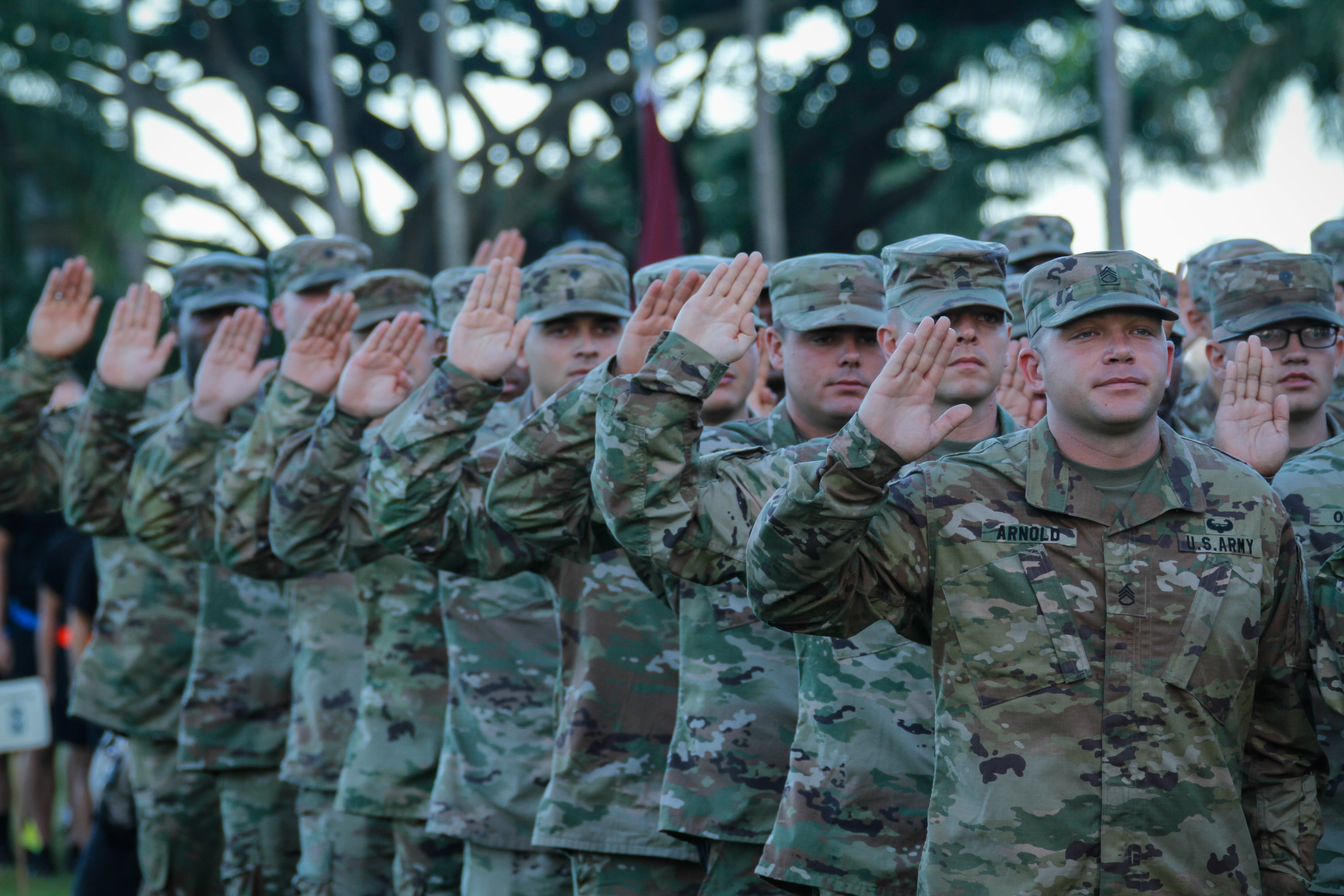After only reaching 75% of its recruiting goal in fiscal 2022, the Army ended the period with nearly 20,000 empty seats, according to the service’s top general.
In a Monday phone interview with Army Times, Chief of Staff Gen. James McConville explained that the exact number of troops the Army ended September with isn’t yet finalized, but the service landed close to an estimate it provided to a panel of lawmakers in July.
“If we round...it’s 465,600,” the general said, “right around where we said [to Congress] we [were] going to land,” which was 466,000. The Army typically releases final end strength numbers in mid-to-late October to allow human resources officials time to input and track separations, medical retirements and other fluctuations in personnel.
The shortfall is nearly 20,000 fewer soldiers than the 485,000 that Congress funded, though the Army told lawmakers in March that it had to cut its target to 476,000 to avoid filling the gaps with lower-quality recruits.
Army Times reported in July that a major end strength shortfall was imminent, due to slumping recruiting that couldn’t be buoyed by the service’s usual emergency measures like larger bonuses, over-retention and new contract options, among other efforts.
The short-fall led the Army to establish the Future Soldier Preparatory Course at Fort Jackson, South Carolina, where recruits who previously would have been turned away for excess body fat or poor test scores have a chance to improve themselves on the Army’s dime. An Army Times reporter embedded at the course in late August.
Officials have insisted that this first-of-its-kind prep course offers young Americans an unprecedented opportunity to meet the Army’s standards, rather than lowering the bar for entry. Leaders note that trainees who can’t meet the requirements to proceed to basic training will be discharged after 90 days.
RELATED

McConville reiterated that argument in the interview, calling standards essential to a “high quality” force.
But there’s concern that leaving boots empty could impact the service’s ability to meet its mission requirements, which have increased in recent months.
Expert Katherine Kuzminski, who leads the Military, Veterans & Society team at the Center for a New American Security think tank, likened the situation to “[Obama-era budget] sequestration, where...a smaller number of people [have] to still carry out the constant number of missions,” though the analogy isn’t perfect.
McConville said he isn’t worried “yet” that the Army won’t be able to fulfill its commitments in fiscal 2023 and beyond, but “we’re certainly concerned.” The general once advocated for a much larger force before the recruiting crisis combined with relative budget stagnation to dash those hopes.
The crisis isn’t limited to the active duty force, either. The Army National Guard will end fiscal 2022 at about 6,000 troops short, according to its chief, Gen. Daniel Hokanson.
The Army Reserve hasn’t met its budgeted end strength since fiscal 2016.
Davis Winkie covers the Army for Military Times. He studied history at Vanderbilt and UNC-Chapel Hill, and served five years in the Army Guard. His investigations earned the Society of Professional Journalists' 2023 Sunshine Award and consecutive Military Reporters and Editors honors, among others. Davis was also a 2022 Livingston Awards finalist.




